13 Castles and Fortresses You Can Still Explore on Foot
Explore some of the most impressive castles and fortresses still standing today, where you can walk through history and marvel at stunning architecture. From the towering walls of medieval strongholds to royal palaces nestled in picturesque landscapes, these sites offer a chance to step back in time. Whether perched on mountaintops or nestled in lush valleys, each destination provides a unique opportunity to experience centuries of history up close.
This post may contain affiliate links, which helps keep this content free. Please read our disclosure for more info.
Hohensalzburg Fortress – Austria
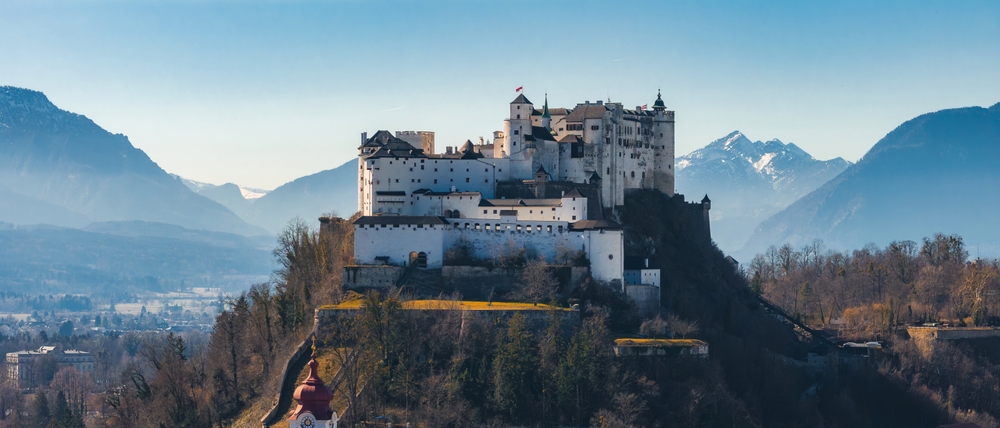
Hohensalzburg Fortress, one of Europe’s largest and most well-preserved medieval castles, is perched high on the Mönchsberg hill, offering breathtaking views of Salzburg and the surrounding Alps. The fortress has stood since 1077 and has been expanded over the centuries, serving both as a royal residence and a military stronghold. Visitors can explore the extensive grounds on foot, taking in the impressive outer walls, the medieval towers, and the intricate courtyard architecture that has remained remarkably intact. The walk up the hill offers a unique perspective on Salzburg’s historical landscape.
Once inside, you can explore the well-preserved rooms and chambers, including the opulent Golden Hall and the St. George Chapel. The fortress houses several exhibitions, including displays of historic weapons, armor, and musical instruments, reflecting its rich past. The climb to the fortress itself is an experience in itself, but exploring the interior offers a chance to step back in time and immerse yourself in the history of this grand structure.
Windsor Castle – England
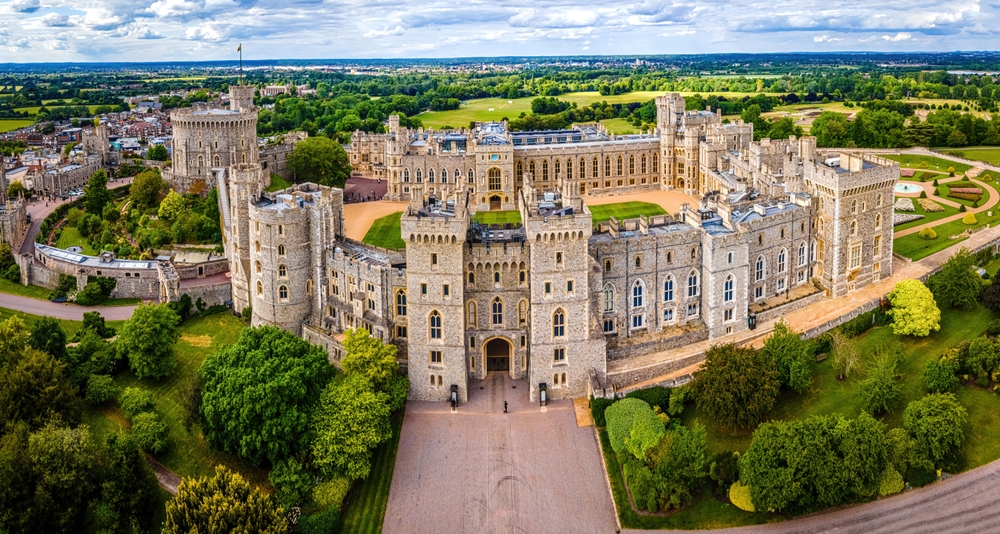
Windsor Castle, the oldest and largest occupied castle in the world, has been a royal residence for over 1,000 years. Located in Berkshire, this iconic castle is a must-see for anyone interested in British history. You can explore the castle on foot, strolling through its sprawling grounds and admiring the mix of medieval, Georgian, and Victorian architecture. The State Apartments are a highlight, filled with priceless artwork and royal artifacts, offering a glimpse into the grandeur of royal life. Visitors can also take in the impressive Queen Mary’s Dolls’ House, a miniature masterpiece of craftsmanship.
The castle’s grounds also feature St. George’s Chapel, a stunning example of Gothic architecture, and the resting place of many British monarchs, including Henry VIII and Charles I. The Long Walk, a picturesque two-and-a-half-mile avenue leading to the castle, is perfect for a leisurely walk, offering panoramic views of the estate. Windsor Castle continues to be an active royal residence, and walking its halls gives a sense of living history, showcasing the continuity of the monarchy.
Dover Castle – England
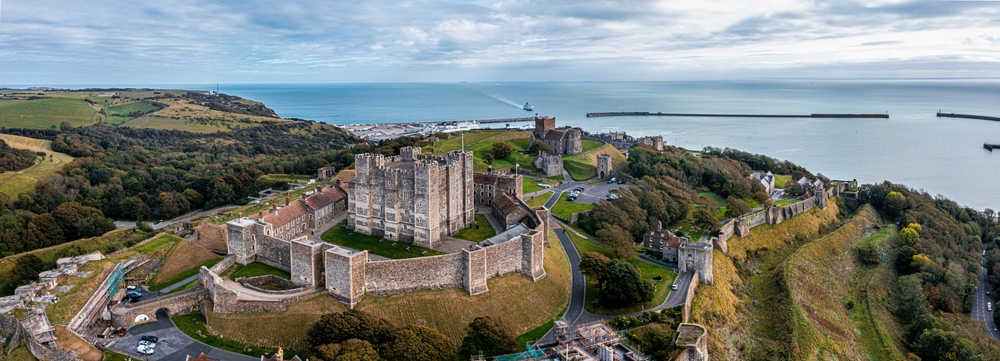
Dover Castle, strategically located on the White Cliffs of Dover, has played a vital role in British defense for over 2,000 years. It is one of England’s most important fortresses, with a history spanning from Roman times to World War II. Walking the castle’s grounds gives you an immersive experience of its military significance, from the imposing medieval keep to the ancient Roman lighthouse. The well-preserved walls, gates, and towers provide a glimpse into how the castle served as a defensive stronghold throughout its history. You can also explore the subterranean tunnels, which were used during World War II as a command center during the Dunkirk evacuation.
The castle’s position offers panoramic views of the English Channel, making it a remarkable spot for both history and scenery. Visitors can wander around the castle’s historic battlements, visit the impressive Great Tower, and learn about its crucial role in the defense of England. Dover Castle’s multi-layered history and accessible grounds make it one of the most fascinating castles to explore on foot, blending its ancient past with its modern role in military history.
Edinburgh Castle – Scotland
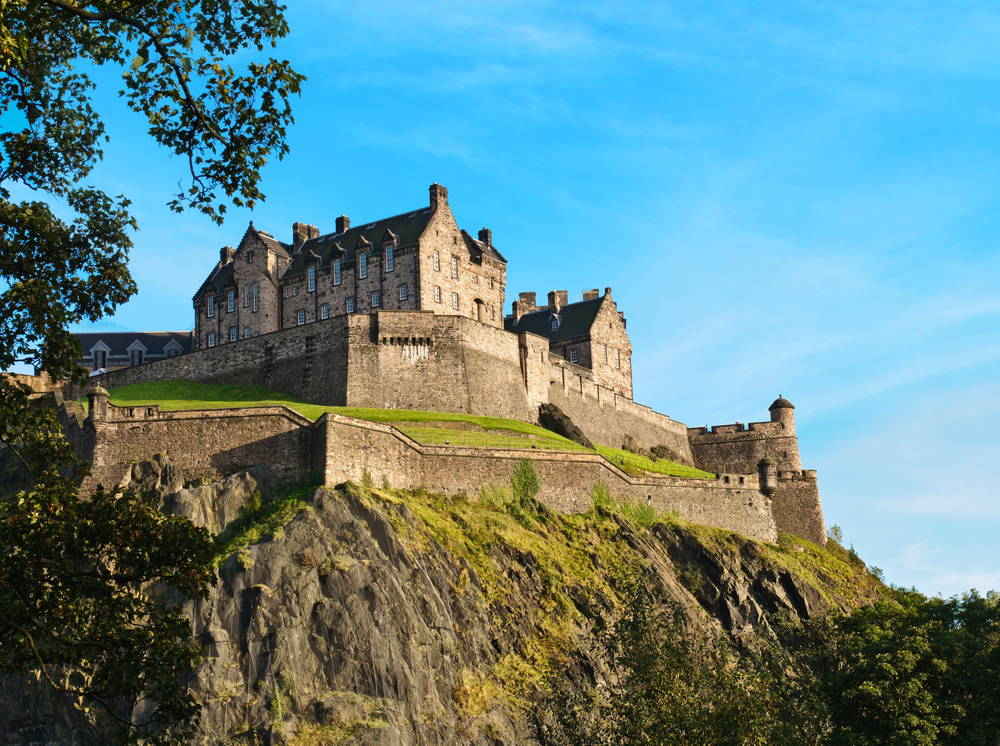
Edinburgh Castle, dominating the skyline of Scotland’s capital, is an iconic fortress that has stood for over 1,000 years. Sitting atop Castle Rock, a volcanic rock formation, the castle offers stunning views of the city below and serves as a historical symbol of Scotland’s power and heritage. Visitors can walk up the Royal Mile and through the castle’s grand gates, exploring its ramparts, towers, and chambers. Highlights include the Crown Jewels of Scotland, housed in the Crown Room, and the Stone of Destiny, which has been used in the coronation of Scottish kings.
Inside the castle, you’ll find a mix of military history, royal artifacts, and impressive architecture. The St. Margaret’s Chapel, the oldest surviving building in the castle, is a peaceful spot that contrasts with the castle’s more imposing structures. Walking through the castle provides a chance to learn about Scotland’s tumultuous history, from its medieval battles to its royal significance. The castle remains an essential part of Edinburgh’s landscape, and exploring it on foot gives visitors a deep connection to Scotland’s past.
Neuschwanstein Castle – Germany
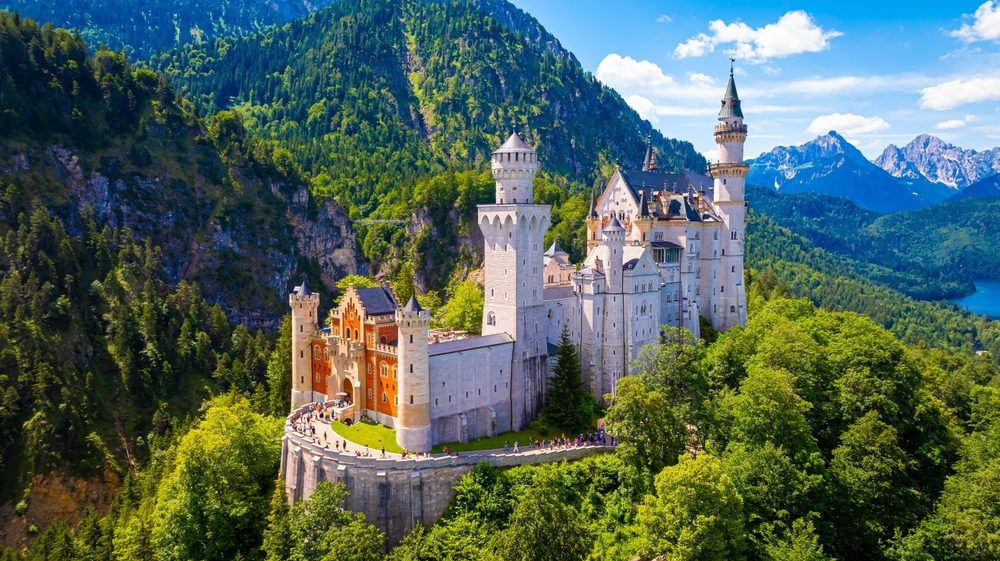
Neuschwanstein Castle, set in the Bavarian Alps, is one of the most famous and picturesque castles in the world. Built in the 19th century by King Ludwig II, the castle was designed to resemble a fairytale fortress, with its soaring towers and intricate architecture. The castle sits on a hilltop and offers breathtaking views of the surrounding forest and mountains. Visitors can explore the grounds on foot, walking along the forest trails to reach the castle’s entrance. The walk up to the castle is scenic and provides various vantage points to capture stunning photographs of this iconic structure.
Inside the castle, visitors can admire the lavishly decorated rooms, including the King’s Bedroom and the Singers’ Hall, which reflect Ludwig II’s passion for music and mythology. The castle’s fairy-tale design and its remote location make it a magical place to explore on foot. Neuschwanstein’s enchanting atmosphere, combined with its historical context, makes it one of the most popular tourist destinations in Germany.
Château de Chillon – Switzerland
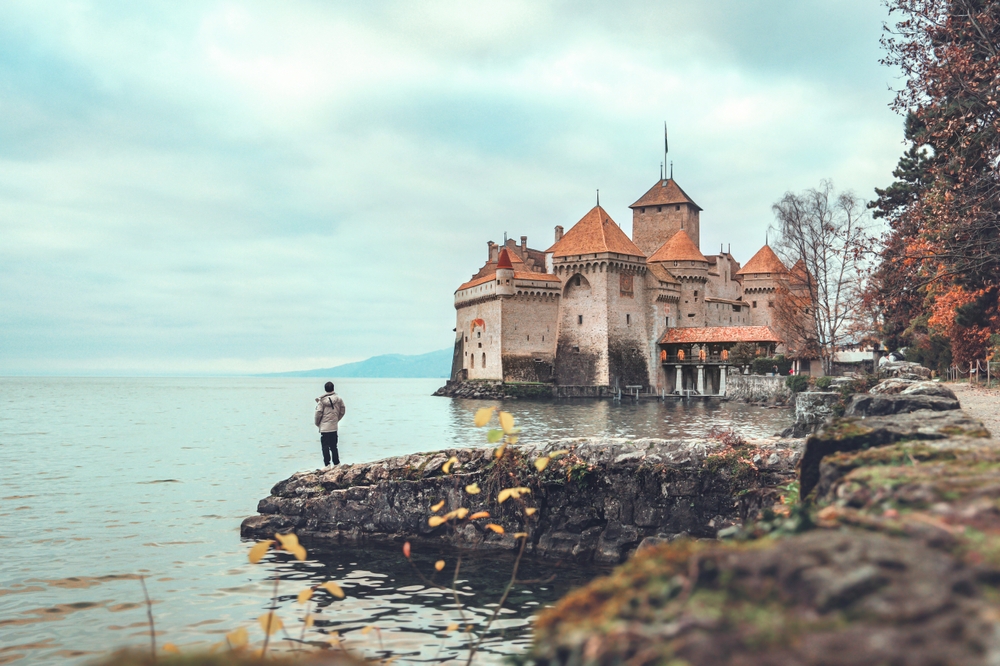
Château de Chillon, located on the shores of Lake Geneva in Switzerland, is a medieval fortress that dates back to the 12th century. This well-preserved castle is famous for its picturesque setting, with views of the surrounding mountains and the lake. Visitors can explore the castle’s extensive grounds on foot, wandering through the courtyards, towers, and dungeons. The walk around the castle is scenic and peaceful, with paths that lead to stunning views of the water and the surrounding landscape.
Inside, you can visit the prison where the 13th-century Savoyard prince was held, along with other historical rooms that reflect the castle’s medieval origins. The Château de Chillon also has a rich history as a strategic military site and a royal residence. Exploring this castle on foot allows visitors to appreciate both the beauty of its surroundings and its historical significance, making it a unique destination for history and nature lovers alike.
Burg Eltz – Germany
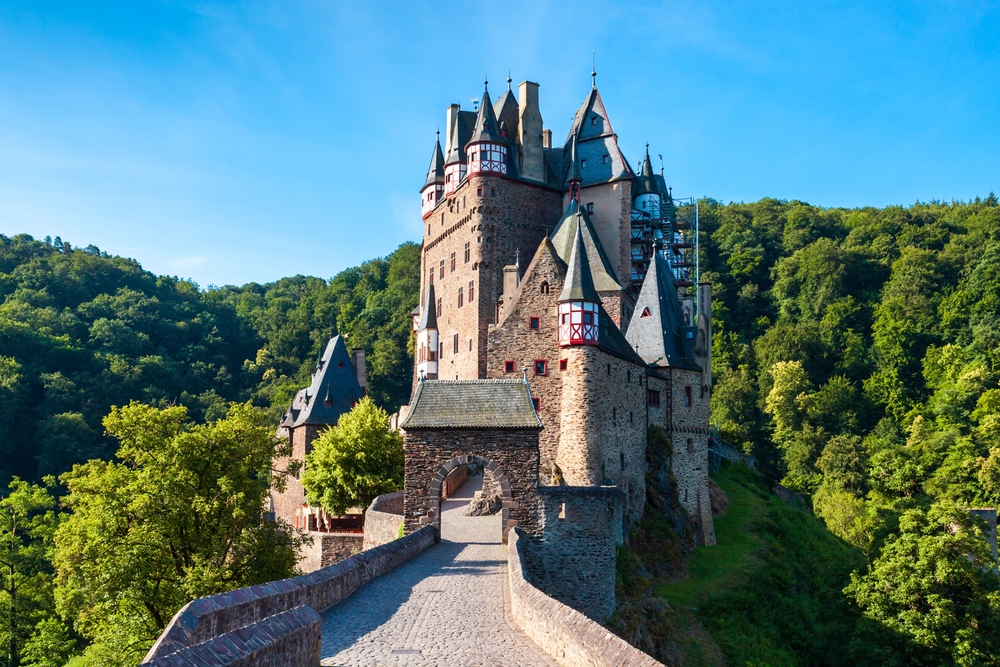
Burg Eltz is a medieval hilltop castle located in the Moselle Valley of Germany, surrounded by dense forest. This well-preserved fortress is a hidden gem, offering visitors the chance to explore the picturesque grounds and discover its rich history. Walking to the castle from the nearby car park provides an immersive experience, as visitors cross a bridge over a creek and pass through the forest before reaching the castle. The entire journey feels like stepping back in time, surrounded by the beauty of nature and the medieval architecture.
Inside, you’ll find impressive rooms adorned with fine furniture, armor, and weaponry, as well as the castle’s original family treasures. The castle has remained in the same family for over 850 years, making it one of the best-preserved medieval castles in Europe. Exploring the castle on foot offers the opportunity to appreciate its historical significance and unique architecture, all set in a serene and natural environment.
Mont Saint-Michel – France
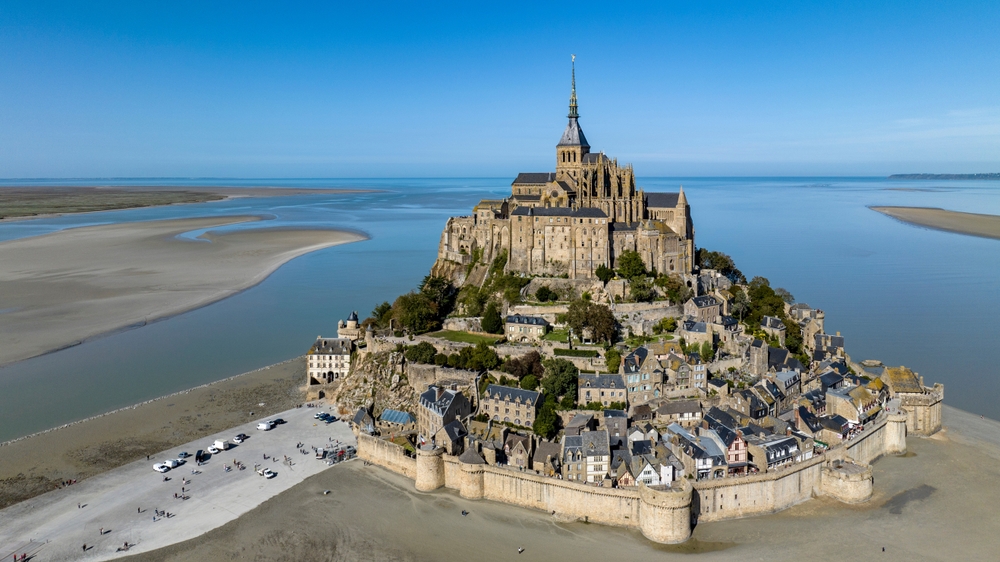
Mont Saint-Michel, located off the coast of Normandy, France, is a unique island fortress that rises dramatically from the sea. The abbey, perched atop a rocky hill, can be reached on foot by crossing a causeway, which is submerged at high tide and revealed at low tide. Walking up the cobbled streets of the island town, visitors pass through ancient gates and narrow alleyways that lead to the abbey itself. The stunning views of the surrounding bay, especially at sunrise or sunset, add to the magic of this unforgettable experience.
Once inside the abbey, you can explore the vast and intricate halls, chapels, and cloisters, which have been in continuous use since the 8th century. The island’s defensive walls and towers offer sweeping views of the surrounding sea and tidal flats. Walking around Mont Saint-Michel provides a sense of tranquility, as the castle and abbey stand as symbols of resilience and beauty. The opportunity to explore this remarkable site on foot enhances its mystique, allowing you to fully immerse yourself in the history of this stunning island fortress.
Prague Castle – Czech Republic
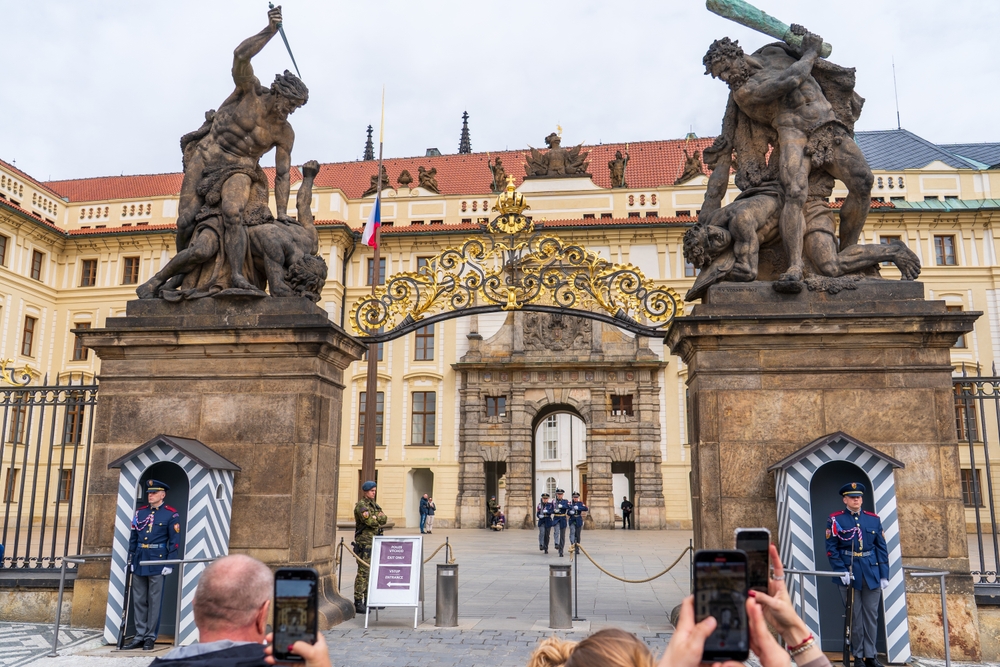
Prague Castle, perched on a hill overlooking the Vltava River, is the largest ancient castle in the world and a UNESCO World Heritage site. The castle complex includes the Gothic-style St. Vitus Cathedral, royal palaces, gardens, and defensive walls, all of which can be explored on foot. Visitors can stroll through the castle’s beautiful courtyards and visit the impressive rooms within the Old Royal Palace, where Bohemian kings and Holy Roman emperors once resided. The castle’s position offers some of the best panoramic views of Prague, making it a perfect spot for sightseeing.
Walking through Prague Castle allows you to explore its history, which dates back to the 9th century. The castle was once the seat of the kings of Bohemia, and later the presidents of Czechoslovakia. It combines architectural styles from different periods, including Romanesque, Gothic, and Renaissance. The rich history, stunning architecture, and incredible views make exploring Prague Castle a must for any traveler to the city.
Alhambra – Spain
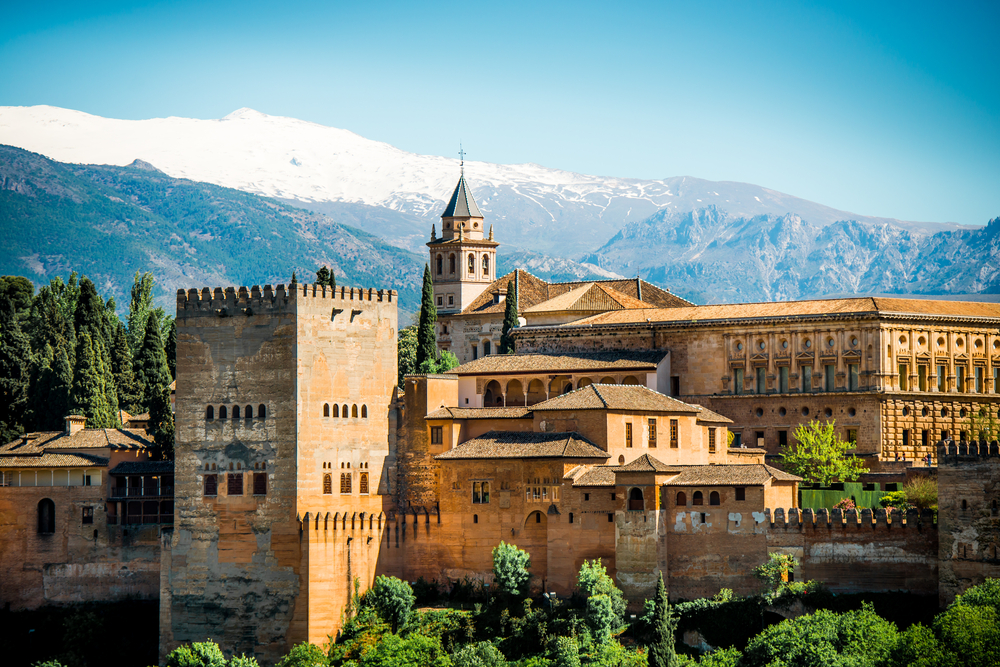
The Alhambra, located in Granada, Spain, is a sprawling palace and fortress complex that showcases the rich history of the Moors in Spain. Visitors can explore the Alhambra’s vast gardens, courtyards, and majestic halls on foot, wandering through the intricately designed Nasrid Palaces and the Generalife gardens. The palace’s distinctive Islamic architecture is adorned with stunning tilework, arches, and carvings, reflecting the beauty and sophistication of the Moorish empire. The walk through the Alhambra provides an opportunity to experience the tranquil beauty of the Islamic gardens, filled with fountains and blooming flowers.
In addition to the palaces, the Alhambra features defensive walls and towers, offering spectacular views of the city of Granada and the Sierra Nevada mountains. The complex also houses the Alcazaba, a military fortress that offers insight into the castle’s strategic role in defending the city. Walking through the Alhambra allows visitors to appreciate the intricate details and historical significance of this masterpiece, which blends nature, architecture, and history seamlessly.
Dunluce Castle – Northern Ireland
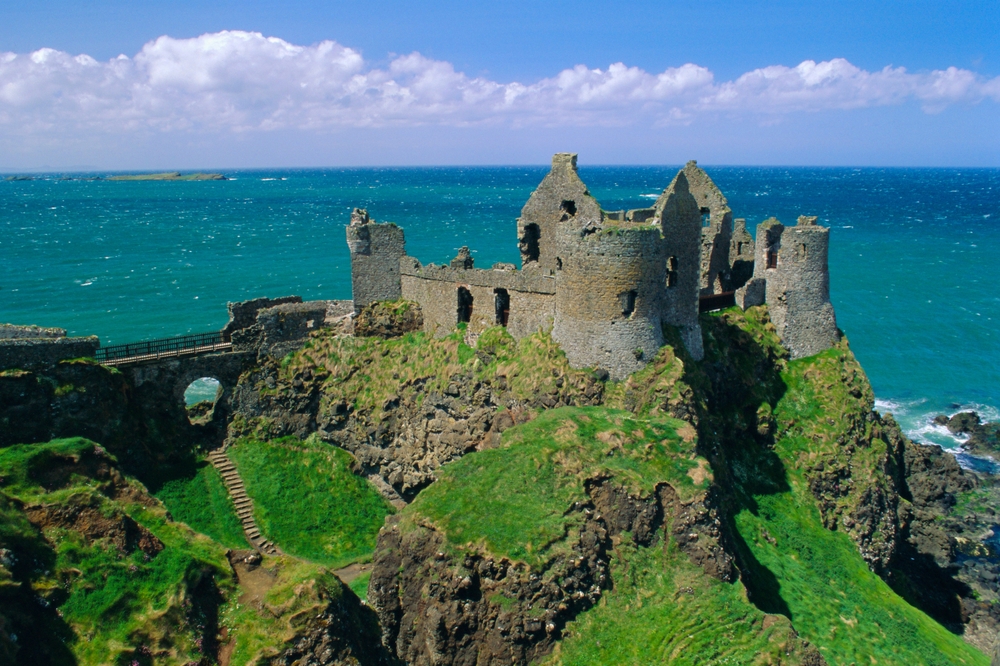
Dunluce Castle, situated on a dramatic cliff overlooking the Atlantic Ocean, is one of the most picturesque and mysterious ruins in Northern Ireland. The castle’s commanding position on the edge of a cliff gives visitors the chance to explore its extensive grounds and imagine life in a medieval stronghold. The walk through the ruins allows you to take in the breathtaking views of the coastline while seeing the remains of the castle’s walls, towers, and gates. Though much of the structure has been lost to time, the setting and atmosphere make it a fascinating place to visit.
Inside the castle, you can explore the remnants of the Great Hall and the kitchen, which are both beautifully positioned overlooking the sea. The castle’s dramatic location, perched high above the cliffs, also makes it an ideal spot for stunning photographs. Walking around Dunluce Castle on foot gives you the chance to feel the full impact of its history, as the windswept landscape and ancient stones create a sense of mystery and intrigue.
Blarney Castle – Ireland
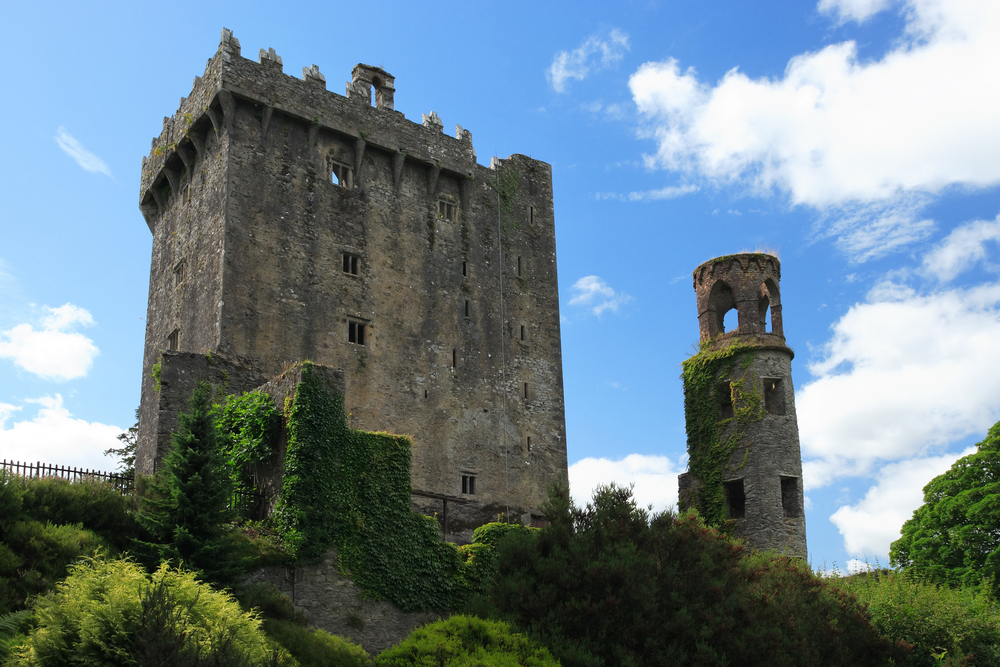
Blarney Castle, located in County Cork, is one of Ireland’s most famous landmarks. Visitors can walk through the castle’s lush gardens and climb to the top of the castle’s keep to kiss the legendary Blarney Stone, said to give the gift of eloquence. The castle is surrounded by beautiful gardens, including the Poison Garden, which features an intriguing collection of toxic plants, and the Rock Close, a mystical site full of ancient trees and stone structures. Exploring these grounds on foot is a magical experience, with numerous pathways to wander and discover.
Inside the castle, visitors can explore the stone staircases, dungeons, and towers, each of which tells a story of the castle’s long history. The castle itself dates back to the 15th century and was once the stronghold of the MacCarthy family. Walking through the ruins allows you to fully appreciate its historic architecture and rich cultural heritage, all while being surrounded by the natural beauty of the Irish countryside.
Himeji Castle – Japan

Himeji Castle, located in Hyogo Prefecture, is one of Japan’s most famous and best-preserved castles. Known as the “White Heron Castle” due to its elegant white exterior, this stunning fortress is an exemplary model of Japanese castle architecture. Walking through the expansive grounds and up to the castle provides visitors with views of its beautiful gardens and intricate defensive walls. The castle’s maze-like corridors and multiple levels are a fascinating exploration, with hidden rooms and wooden staircases offering a glimpse into its storied past.
Inside, the wooden beams and tatami mat floors of the castle give you a sense of traditional Japanese design. The castle’s interior features exhibits that explain its construction and history, including the strategic military role it played during the Sengoku period. Walking around the castle allows visitors to appreciate the precision and craftsmanship that went into making Himeji Castle an enduring symbol of Japan’s heritage.
This article originally appeared on Avocadu.
